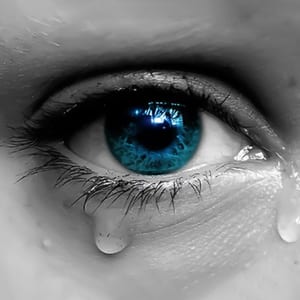 Tens of millions of Americans suffer from dry, itchy eyes. They avoid bright lights due to sensitivity and are all too familiar with a burning sensation in their eyes. Unless they regularly administer a topical lubricant into their eyes for temporary relief, they generally feel uncomfortable.
Tens of millions of Americans suffer from dry, itchy eyes. They avoid bright lights due to sensitivity and are all too familiar with a burning sensation in their eyes. Unless they regularly administer a topical lubricant into their eyes for temporary relief, they generally feel uncomfortable.
This discomfort is more than just that. Dry eye disease (DED), medically known as keratitis sicca or keratoconjunctivitis sicca (say that five times fast), is one of the most common eye diseases and is especially prevalent in women over the age of 50.
Unfortunately, DED is often left undiagnosed or, if it is diagnosed, mistreated. Fortunately, there are appropriate treatment options for mild to severe cases. Proper diagnosis and treatment of your DED requires care from a well-trained professional.
The Eye Institute of West Florida is one of the largest multi-specialty ophthalmology practices in the country. Founded by Stephen M. Weinstock, M.D., FACS in 1974, what began as a one-physician practice is now home to 28 physicians, with six offices across the Tampa Bay area. The Eye Institute has been caring for people in Tampa Bay for almost 45 years, guided by a single vision: providing expert eye care for every eye disease with the focus always being on the patient.
Part of this mission led to the practice opening the Dry Eye Center of Excellence in 2017. This branch of the practice is devoted solely to the diagnosis and treatment of DED. The Dry Eye Center of Excellence emphasizes the importance of understanding the disease in order to appropriately treat it, arming you with the appropriate tools to win your battle against irritating dry eyes.
Steven Kane, MD is a cornea surgeon and Vasilios Diakonis, MD is a refractive cataract, LASIK and cornea surgeon at The Eye Institute of West Florida, a multi-specialty ophthalmology practice in Tampa Bay that has been providing eye care in the community for 44 years. As cornea surgeons, Dr. Kane and Dr. Diakonis regularly see the ways DED affects their patients’ vision.
“Our practice specializes in the diagnosis and treatment of specific ocular diseases,” Dr. Kane explains, “and we realized that there was an unmet need as it related to DED. We were treating DED patients, but we didn’t have a specialty department devoted to the treatment of this disease.”
The primary focus of the Dry Eye Center of Excellence is to address patients’ concerns related to the disease and work together to create an appropriate treatment plan best suited to them. That begins with understand what causes dry eyes in the first place.
“DED is a chronic disease of the ocular surface in which a person doesn’t produce enough quality tears to properly lubricate and nourish the eye,” Dr. Diakonis describes.
He continues, “A normal tear film consists of three components: an oily component, a watery component and a mucous-like component. A problem with the quality of any of these components can result in tear instability and create dry eyes. Symptoms vary from person to person. Sometimes symptoms present themselves in such a way that the person suffering doesn’t realize that they actually have dry eyes. For example, excessive tearing.”
The most common symptoms of DED include irritation, a gritty, scratchy or burning sensation, a feeling of something in your eye(s), excess watering, blurred vision and redness. If left untreated, severe DED can result in scarring, ulceration, infection and damage to the cornea.
Fortunately, technological advancements and increased understanding of the nature of tears and tear production has drastically improved the treatment of DED. The Eye Institute’s Dry Eye Center of Excellence houses a team of dry eye experts, trained specifically in the diagnosis and advanced treatment of this often times debilitating disease.
“The diagnosis and treatment process for DED is specific to each patient. Depending on the severity of their symptoms, there are different treatment options available. Determining the underlying cause of the patient’s dry eye is crucial. We must assess the specific type of dry eye before recommending the best treatment option,” Dr. Kane elaborates.
He adds that, “Our practice is fortunate to be at the forefront of treatment options for DED, from what we offer over the counter at our eye care center to more advanced treatment options, such as Intense Pulsed Light, or IPL, therapy.”
IPL treatment is a painless outpatient procedure that reduces the discomfort caused by DED. One of the dry eye specialists at The Eye Institute applies IPL shields to protect the eyes from the light before applying a thin layer of cooling gel to the treatment area. Then a hand-held device flashes bright light, which is filtered to only allow wavelengths that are able to be absorbed by the dilated blood vessels, onto the skin.
IPL therapy is one of the most advanced treatment options for DED and typically leaves patients less dependent on artificial tears or other lubricants used to provide relief from DED. Patients generally require four to six treatment sessions, separated by one month each.
“The treatment option we choose depends on each patient and their specific needs. For patients who are suitable candidates for IPL treatment, we have seen great results. We generally recommend IPL for patients looking for an alternative to typical regimens that require consistent administration” Dr. Diakonis says.
He concludes, “The beauty of eye care today is that there are different options, and at The Eye Institute we have an entire division devoted to helping you find relief from dry eyes.”

